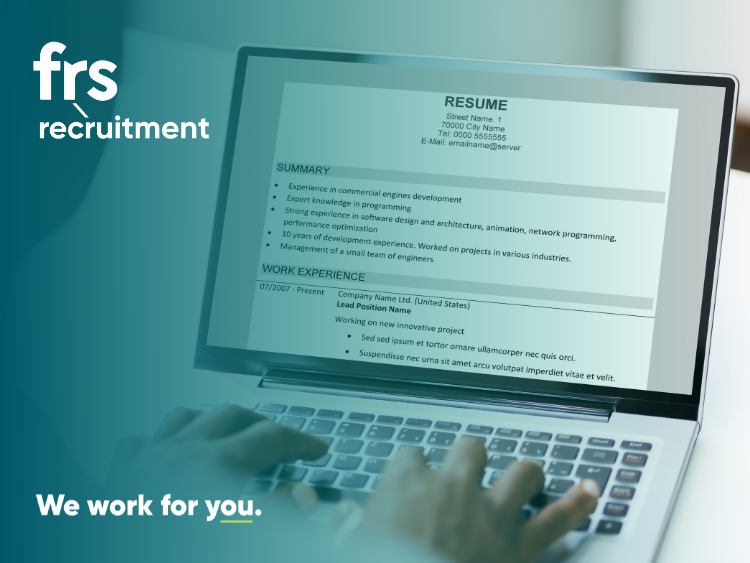From URL to IRL: An IT Professionals' Guide to a Winning CV and Online Profile
As we’re seeing more and more companies hiring in IT at the moment, the job market is becoming increasingly competitive, and it’s important to make your profile stand out to hiring managers. Recruiters and Talent Acquisition (TA) professionals often sift through many profiles during searches to find the ideal candidate. To get noticed, it's crucial to optimise your profile to show off your skills effectively. Whether you're using online job platforms, social media, or professional networking sites, following these tips will help you create a compelling and attractive profile.
Craft a Clear and Concise Headline:
Your headline is the first thing recruiters and TAs see, so make it count. Use a concise statement that reflects your current job title, skills, and industry expertise. For example, "Experienced Project Manager | PMP Certified | IT Specialist."
Create a Compelling Summary:
Your profile summary is like a personal elevator pitch. Write a brief yet engaging summary that highlights your key accomplishments, skills, and career goals. Use keywords relevant to your technical experience, e.g. instead of putting “IT Support Specialist”, elaborate and write “4 years’ of experience in IT Support using Citrix, Powershell and Azure”.
-4.png?width=750&height=563&name=Copy%20of%20Blog%20images%20(3)-4.png)
Highlight Achievements and Quantifiable Results:
Recruiters are interested in candidates who can demonstrate their impact. Use your experience section to showcase specific achievements and quantifiable results whenever possible. For example, an IT Manager might highlight that they were involved in a project to reduce company spending on telecoms, but this would be even more attractive is phrased as “Led a continuous improvement project to reduce spending on telecoms, resulting in a reduced overall spend of 30% in this area”.
Optimize Your Skills Section:
Ensure your skills align with the job you're seeking. Include a mix of hard and soft skills, and prioritize the most relevant ones, especially any software you’ve worked with. This not only makes it easier for recruiters to identify your strengths but also improves your profile's search ranking.

Use Endorsements and Recommendations:
Endorsements and recommendations add credibility to your profile. Ask for recommendations from colleagues, supervisors, or clients, and reciprocate when appropriate. A positive testimonial can provide valuable insights into your work ethic and abilities, and can help you get noticed.
Keep Your Experience Section Detailed:
Provide a comprehensive overview of your work experience, emphasizing the impact you've had on previous employers or projects. Use action verbs and be specific about your role and responsibilities. List your experience from most recent to least with dates, and unless you are new to IT (under 3 years of experience), it is fine to leave out experiences that are no longer relevant to your field, e.g. working as a barista during college.

Include Relevant Certifications and Education:
Highlight your educational background and certifications, especially those directly related to the job you're pursuing. Certifications can act as a quick validation of your skills and expertise, and be sure to name any softwares or technologies that were included as part of your course, even in a bullet point list.
Regularly Update Your Profile:
Keep your profile current by updating your experience, skills, and achievements regularly. An updated profile signals to recruiters that you are actively engaged and invested in your professional development, and when using LinkedIn, make sure you have your profile set as Open to Work, with your preferences listed which is viewable by talent professionals only. There is an optional green banner which can be useful, but please be aware that your current employer will be able to see this, so if you don’t want them to know that you’re looking for a new role, don’t use this feature!

Engage in Professional Networking:
Actively participate in relevant groups and forums on professional networking sites such as LinkedIn. Share industry insights, comment on posts, and connect with professionals in your field. Even when you’re not looking for a new role, if you receive a message or connection request from a recruiter or a TA from a company you’d consider working at in future, accept it and keep them in your network. Networking not only expands your professional circle but also increases your visibility.
Conclusion:
Optimising your profile for recruiters and Talent Acquisition professionals is about having an accurate and concise representation of your skills and achievements. By following these tips, you increase your chances of catching a talent professional’s eye and landing that dream job. Keep refining and updating your profile to reflect your evolving career, and remember, your CV or your LinkedIn profile are all a TA or recruiter knows about you before choosing whether to reach out or not, so make it count!
